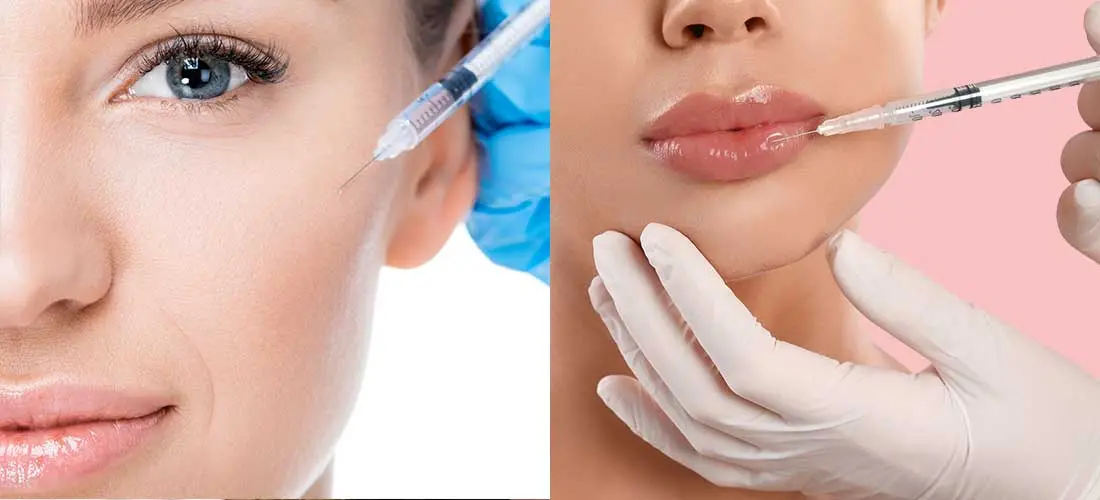As Americans increasingly prioritize youthful, natural-looking results without the risks of invasive surgery, dermal filler treatments have become a cornerstone of modern aesthetic medicine.
This article explores dermal fillers from a fresh perspective—not just as a beauty enhancement, but as a preventive and confidence-boosting solution. We’ll walk you through preparation guidelines, treatment steps, pros and cons, and what to know before booking your first session.
What Are Dermal Fillers and Why Are They So Popular?
Dermal fillers are gel-like substances—usually made of hyaluronic acid, a compound naturally found in the skin—that are injected beneath the skin to restore volume, smooth lines, and enhance facial contours.
What makes them appealing in the U.S. market is their versatility. From reducing deep wrinkles to subtly plumping the lips and cheeks, fillers allow for customized and reversible results with minimal downtime. With a growing number of people seeking "natural refresh" looks, fillers have become the go-to option for millennials and baby boomers alike.
Preparation: What to Know Before Getting Fillers
Before scheduling your first treatment, here are a few things to consider:
- Choose a certified practitioner: In the U.S., dermal filler treatments must be performed by licensed professionals. Board-certified dermatologists and plastic surgeons are the safest choice.
- Discuss your expectations: During your consultation, be open about your desired results. Bring photos if needed.
- Avoid certain medications: Blood-thinning medications and supplements like aspirin, ibuprofen, or fish oil should be avoided a few days before treatment to reduce the risk of bruising.
- Hydrate and rest: A well-hydrated body and rested skin respond better to treatment.

Step-by-Step: What the Process Looks Like
- Consultation and facial analysis Your provider will examine your facial structure, skin texture, and areas of concern.
- Cleansing and numbing The skin is thoroughly cleansed, and a topical numbing cream is applied for comfort.
- Precise injections Small amounts of filler are injected into targeted areas. The process typically takes 15–45 minutes.
- Post-treatment assessment You’ll be shown the immediate results and receive aftercare instructions.
Pros and Cons of Dermal Fillers
Pros:
- Minimally invasive, no surgical downtime
- Instant visible results
- Natural-looking rejuvenation
- Adjustable and reversible in most cases
Cons:
- Temporary results (usually 6–18 months)
- Possible side effects: bruising, swelling, or asymmetry
- Cost may add up with maintenance treatments
Key Considerations After Treatment
- Avoid touching or massaging the area for 24 hours
- Skip intense workouts and heat exposure (e.g., saunas) for 1–2 days
- Stay hydrated and follow aftercare instructions carefully
- Watch for rare complications like persistent swelling, pain, or discoloration—and contact your provider if anything feels off
Why the U.S. Market Is Embracing Fillers as More Than Cosmetic
In the American aesthetic world, dermal fillers are evolving beyond beauty. They're being used for preventive aging, post-weight loss volume restoration, and even as part of gender-affirming care. The treatment is no longer reserved for celebrities or those over 50. People in their 20s are now turning to subtle fillers to preserve youthful volume early on.
Final Thoughts
As the U.S. continues to lead the global medical aesthetics industry, dermal fillers are not just a trend—they're part of a broader movement toward empowered self-care. Whether you’re looking to smooth fine lines, refresh your appearance, or subtly enhance your natural features, dermal fillers offer a safe and flexible option backed by science and artistry.
Before taking the plunge, take time to consult with a qualified provider, understand the process, and set realistic expectations. With the right approach, dermal fillers can help you age on your own terms—with confidence.
